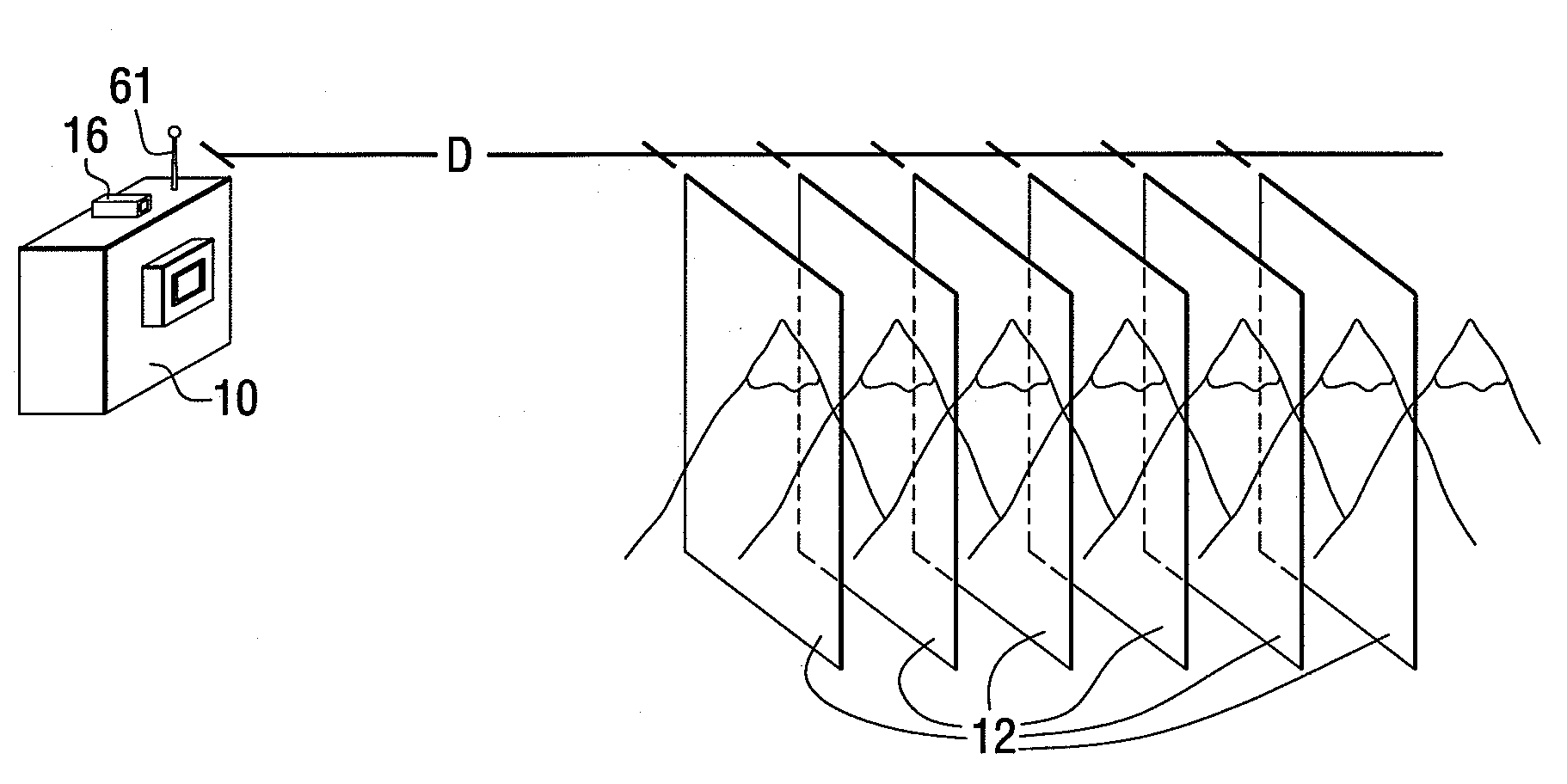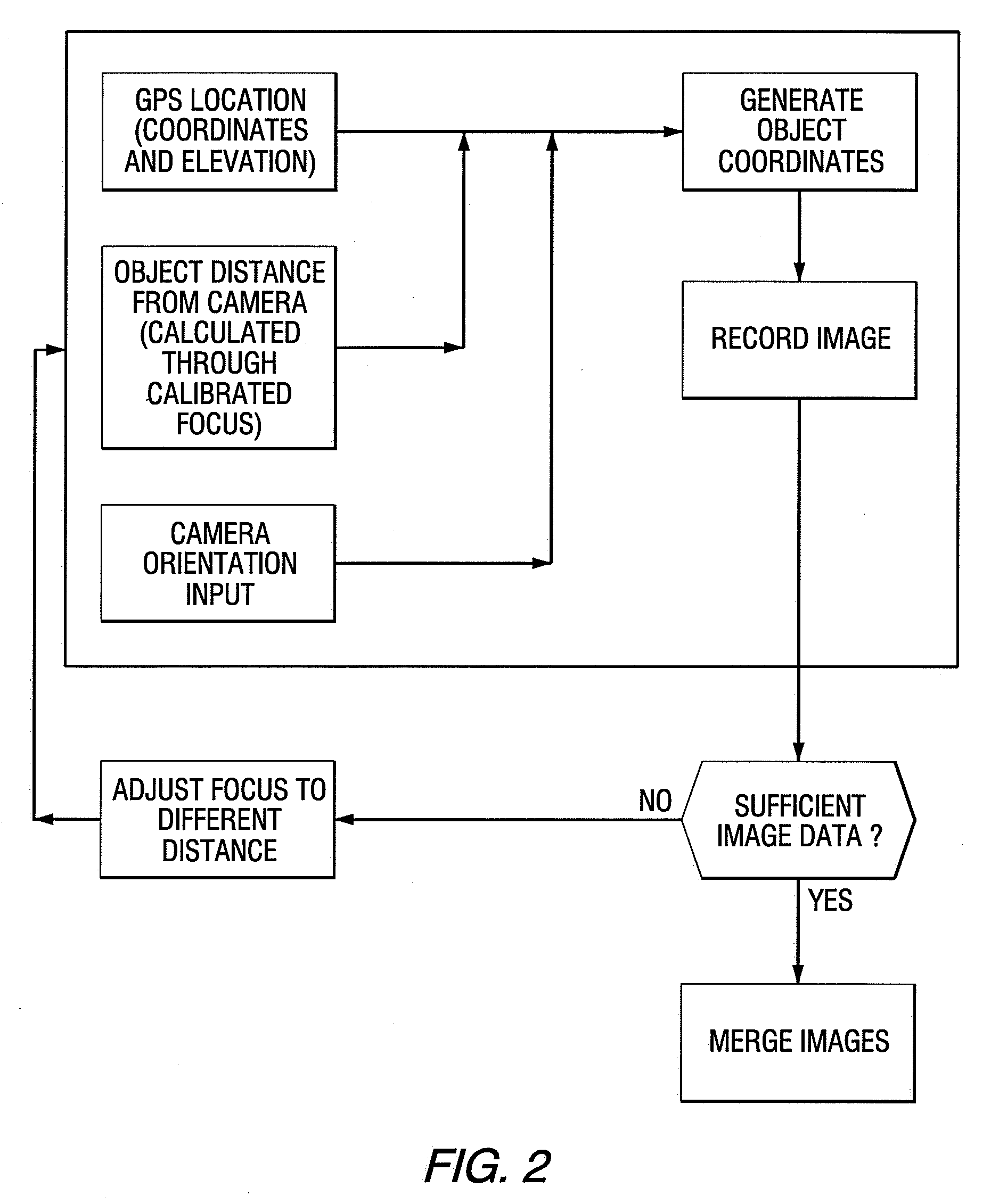Method for infrared imaging of living or non-living objects including terrains that are either natural or manmade
a technology of infrared imaging and living objects, applied in the field of infrared imaging of living or non-living objects including terrains, can solve the problems of limited depth of field (dof) of ir cameras, similar to standard optical systems, and limit the depth of field an observer can see in the image, so as to achieve the effect of improving the depth of field
- Summary
- Abstract
- Description
- Claims
- Application Information
AI Technical Summary
Benefits of technology
Problems solved by technology
Method used
Image
Examples
Embodiment Construction
[0020]Infrared cameras convert IR radiation (˜750 nm to 1 mm) to a digital signal based on the wavelength of the radiation. As the makeup of terrain changes so too does the IR radiation produced by the surface. IR cameras are able to detect these changes and portray them as an image. Focal planes 12 are described and visualized as two dimensional as shown in FIG. 1. As commonly used, the term “focal plane” refers to planes, perpendicular to the optic axis, which pass through the front and rear focus points behind the lens of the camera. As used herein the term “focal plane” refers to a plane, perpendicular to the optic axis, which passes through the front focus point, i.e. a plane within the object space unless expressly indicated to have a different meaning. The term “optic axis” refers to an imaginary line perpendicular to the lens of a camera and passing through the center of the lens. As used herein the term “image” refers to a visual representation of an object or scene which m...
PUM
 Login to View More
Login to View More Abstract
Description
Claims
Application Information
 Login to View More
Login to View More - R&D
- Intellectual Property
- Life Sciences
- Materials
- Tech Scout
- Unparalleled Data Quality
- Higher Quality Content
- 60% Fewer Hallucinations
Browse by: Latest US Patents, China's latest patents, Technical Efficacy Thesaurus, Application Domain, Technology Topic, Popular Technical Reports.
© 2025 PatSnap. All rights reserved.Legal|Privacy policy|Modern Slavery Act Transparency Statement|Sitemap|About US| Contact US: help@patsnap.com



